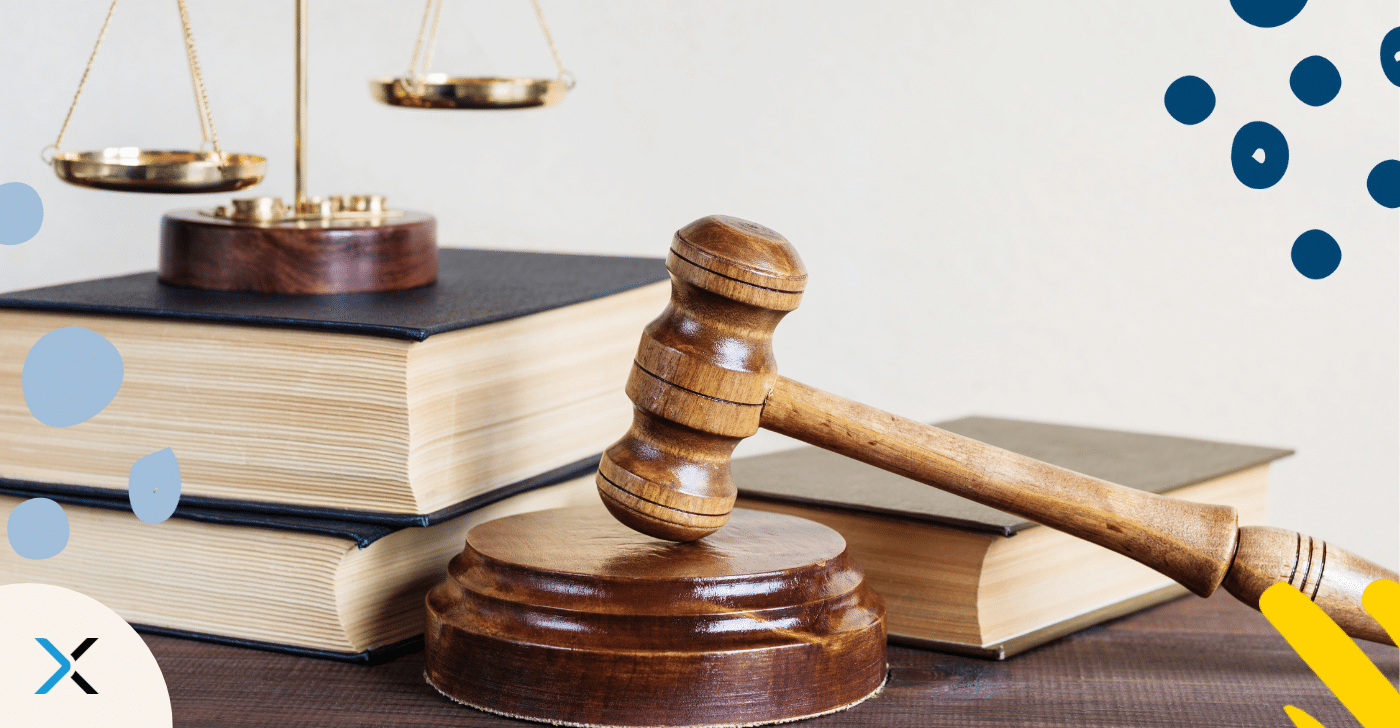Use AI Without Risk: The Power of an AI Governance Framework

In the U.S. alone there are more than 120 Artificial Intelligence (AI) bills in Congress right now. The challenge for organizations is clear: How can organizations leverage AI’s transformative potential without exposing themselves to ethical, legal, or reputational risks? The answer lies in a robust AI governance framework — a system of policies, standards, and oversight that ensures AI operates responsibly, transparently, and ethically.
A recent Acrolinx survey on attitudes towards AI risk and regulation captured that almost 75% of organizations regulate the use of AI internally. But what does that internally-regulated governance look like exactly? Let’s find out.
What’s AI governance?
AI governance refers to the way organizations guide the safe, ethical, and fair use of AI systems. Its role is to align AI with societal values while safeguarding human rights and minimizing risks such as bias or misuse. By minimizing AI-associated risk, governance fosters trust, innovation, and accountability.
Effective AI governance requires collaboration among developers, users, ethicists, and policymakers. Its ultimate goal is to balance the innovation of AI with guardrails that prevent harm and ensure fair outcomes.
Why’s an AI governance framework important?
1. Prioritize information accuracy
AI systems often analyze and process enormous datasets to deliver insights, make predictions, or automate decisions. Without governance, inaccuracies or inconsistencies in this data can proliferate, leading to flawed or harmful outputs. For instance, a misinformed AI system could suggest inaccurate medical advice or fail to identify critical patterns in financial fraud detection.
Effective data governance ensures that AI systems are built on high-quality, verified data, which produces precise, trustworthy results every time.
2. Limit risk
The risks associated with AI are multifaceted, spanning technical, operational, and reputational domains. Mismanaged AI can lead to costly mistakes, such as a chatbot propagating offensive language or automated trading algorithms causing financial market disruptions.
Governance frameworks act as safeguards, identifying potential vulnerabilities and ensuring mechanisms are in place to mitigate them. This proactive approach reduces the likelihood of errors that could damage a company’s reputation or bottom line.
3. Reduce bias
AI models are only as good as the data they’re trained on. Without governance, they risk perpetuating existing societal biases, such as gender stereotypes or racial discrimination. For example, a recruitment AI tool trained on biased data might unfairly favor male candidates over female ones for technical roles.
AI governance enforces rigorous scrutiny of training datasets and decision-making algorithms to eliminate bias, fostering equitable and inclusive outcomes.
4. Support regulation and compliance
Governments and regulatory bodies worldwide are introducing stringent AI laws, such as the EU’s AI Act and the US Executive Order on AI safety. These laws categorize AI systems by risk level in terms of privacy, equity, and innovation. Non-compliance can lead to hefty fines, legal disputes, and reputational damage. Governance frameworks align AI practices with these regulations, enabling organizations to stay compliant and mitigate legal risks proactively.
5. Enhance transparency and accountability
AI systems often operate as “black boxes,” with decision-making processes that are opaque even to their developers. This lack of explainability can undermine trust and make it difficult to address errors or biases. Governance frameworks prioritize transparency, with clear documentation of how decisions are made. This builds user confidence and provides accountability, essential for high-stakes applications like loan approvals or healthcare diagnostics.
6. Drive consistent results across the enterprise
In large organizations, multiple teams might deploy AI across different departments, such as marketing, customer support, or operations. Without governance, this can lead to inconsistencies in how AI is used, resulting in conflicting decisions or outputs. AI governance enforces your standards, creating a cohesive approach across the organization to ensure AI aligns with the brand’s values and operational goals.
7. Catch model drift
AI systems aren’t static; they evolve as they interact with new data. This can lead to “model drift,” where an AI’s outputs deviate from its intended behavior over time. Without governance, this drift can cause significant issues, such as decreased accuracy or unintended biases. Governance frameworks establish monitoring and update protocols to detect and correct these drifts, ensuring that AI systems remain reliable and aligned with their original purpose.

How to deploy an effective AI governance framework
This isn’t a step by step nor an exhaustive list of things you need to do. But it does outline some components of AI governance to create an effective risk management framework:
| Step | Definition | Implementation |
| Establish guidelines | Define ethical principles to guide the use of AI. Focus on building trust and respect for human rights in AI processes. | – Develop a formal code of ethics. – Prioritize empathy, inclusion, and safety. – Make sure principles align with organizational values and regulations. – Tailor ethics guidelines to specific AI use cases. – Secure leadership buy-in to promote widespread adherence. |
| Build your governance team | Assemble a team with diverse expertise to oversee AI governance. Encourage collaboration across departments to tackle risks comprehensively. | – Include members from AI development, legal, ethics, and business operations. – Assign roles like bias monitoring, compliance checks, and strategy review. – Conduct regular reviews to evaluate AI risks and align governance with business objectives. |
| Implement transparency and accountability protocols | Make AI decisions explainable and traceable to maintain trust. Build systems that allow for clear oversight of AI behavior. | – Use Explainable AI (XAI) techniques to clarify decision-making processes. – Implement audit trails for tracking model behavior and outcomes. – Provide detailed documentation on model training and usage. – Set up reporting systems for anomalies and non-compliance. |
| Establish data and content governance policies | Ensure the quality, security, and fairness of data used in AI systems. Protect sensitive information and maintain data integrity. Use Acrolinx to implement automated content governance across all your written content. | – Implement data provenance checks to track the origin and usage of data. – Regularly audit datasets for accuracy and bias. – Use encryption and access controls to secure data. – Set up continuous monitoring for data quality and consistency. |
| Commit to continuous training | Equip teams with up-to-date knowledge of AI ethics, regulations, and technology. Build a culture of responsibility and awareness around AI governance. | – Conduct mandatory training sessions on topics like the GDPR, AI Act, and emerging AI risks. – Provide ongoing education as regulations and AI technologies evolve. – Integrate AI governance training into employee onboarding and leadership programs. |
Acrolinx: Your insurance policy against AI content risks
When it comes to responsible AI governance in content creation, Acrolinx leads the way. As an enterprise content governance platform, Acrolinx ensures every piece of content adheres to ethical, legal, and brand standards. Here’s how Acrolinx helps enterprises manage content-related AI risks:
- Automated compliance checks: Acrolinx integrates into content workflows, automatically reviewing drafts against compliance, inclusivity, and tone standards.
- Inclusive language: The platform identifies and mitigates discriminatory language, keeping content aligned with your organizational values.
- Transparency: With real-time insights and reporting on both content quality and performance, Acrolinx provides clear visibility into content quality and compliance.
- Efficiency and scale: By automating quality checks across your website and content repositories, Acrolinx reduces editorial review time and scales compliance efforts effortlessly.
In a rapidly high-stakes regulatory environment, Acrolinx is not just a tool — it’s a strategic asset that pairs content governance technology with your enterprise’s AI ethics policies.
Are you ready to create more content faster?
Schedule a demo to see how content governance and AI guardrails will drastically improve content quality, compliance, and efficiency.

Kiana Minkie
She comes to her content career from a science background and a love of storytelling. Committed to the power of intentional communication to create social change, Kiana has published a plethora of B2B content on the importance of inclusive language in the workplace. Kiana, along with the Acrolinx Marketing Team, won a Silver Stevie Award at the 18th Annual International Business Awards® for Marketing Department of the Year. She also started the Acrolinx Diversity and Inclusion committee, and is a driving force behind employee-driven inclusion efforts.




